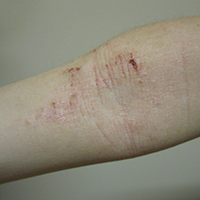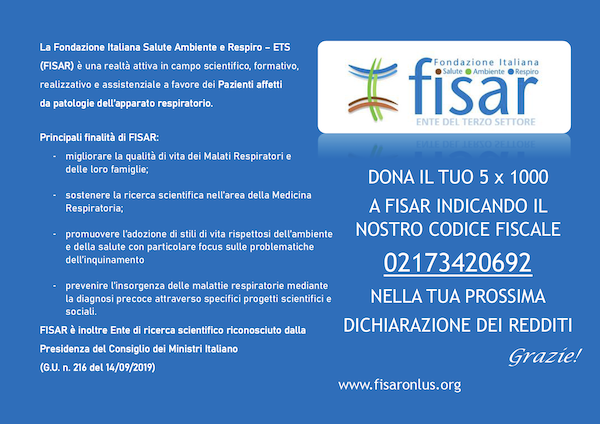Multidisciplinary management in type 2 inflammatory disease
Keywords:
Atopic dermatitis, type 2 comorbidities, asthma, nasal polypsAbstract
Greater understanding of molecular pathophysiology has led to the recognition that an excessive type 2 inflammatory response is at the basis of the pathophysiology of several inflammatory diseases including atopic dermatitis (AD), asthma, and chronic rhinosinusitis with nasal polyps (CRSwNP). Given the availability of biological agents that can permit management of specific disease endotypes, this reinforces the need for detailed characterization of these diseases through a multidisciplinary approach. Herein, these three conditions are briefly overviewed and practical guidance for a multidisciplinary approach to management is presented. Since type 2 inflammation is suppressed by steroids, drugs such as glucocorticoids have long been the workhorse of medical therapy. However, steroids have well-known local and systemic adverse effects, especially when used at high doses over prolonged periods of time, which is problematic when treating chronic diseases such as AD, asthma, and CRSwNP. Moreover, a substantial proportion of patients remain refractive to therapy. In the attempt to overcome these limitations, greater understanding of the molecular mechanisms of type 2 inflammation have led to the development of targeted biological drugs such as dupilumab, a fully human monoclonal antibody that targets the α chain of the IL-4 receptor. Dupilumab represents a unique therapy for type 2 inflammatory diseases and to date is the only therapy approved for AD, asthma, and CRSwNP. In terms of multidisciplinary management of type 2 inflammatory conditions, the main healthcare professionals involved include a dermatologist, pneumologist or allergologist, and ENT specialist. The model proposed herein takes into account the complex management of patients with type 2 inflammatory conditions and the new biological agents available. A multidisciplinary team can provide a central point for patient management, improve outcomes and specialist referrals, reduce costs, and guarantee that the most appropriate therapeutic decisions are made, as well as aid in management of adverse events. The multidisciplinary model should be structured and dedicated, but at the same time simple and flexible in order to not risk slowing down the patient's care. At present, it is believed that a structured multidisciplinary approach is currently the best means to optimize care of patients with type 2 inflammatory conditions.
References
Burke H, Davis J, Evans S, Flower L, Tan A, Kurukulaaratchy RJ. A multidisciplinary team case management approach reduces the burden of frequent asthma admissions. ERJ Open Res 2016;2:00039-2016.
Patil V, Townshend C, Kurukulaaratchy R, Dyke B, Rahman T, Joshi V. The impact of a specialist multi-disciplinary approach to difficult asthma on healthcare outcomes in a district hospital. Eur Respir J 2013;42:P2023.
Boguniewicz M, Nicol N, Kelsay K, Leung YM. A multidisciplinary approach to evaluation and treatment of atopic dermatitis. Semin Cutan Med Surg 2008;27:115-27.
Carr S, Chan ES, Watson W. Eosinophilic esophagitis. Allergy Asthma Clin Immunol 2018;14:58.
Gandhi NA, Bennett BL, Graham NM, Pirozzi G, Stahl N, Yancopoulos GD. Targeting key proximal drivers of type 2 inflammation in disease. Nat Rev Drug Discov 2016;15:35-50.
Steinke JW, Wilson JM. Aspirin-exacerbated respiratory disease: pathophysiological insights and clinical advances. J Asthma Allergy 2016;9:37-43.
Vlastos I, Gkouskou K, Doulaptsi M, Karatzanis A, Prokopakis EP. Precision medicine in rhinosinusitis. Curr Allergy Asthma Rep 2019;19:12.
Global Initiative for Asthma (GINA). Available from: https://ginasthma.org
Lombardi C, Passalacqua G, Asero R, Bagnasco D, Blasi F, Bonini M, et al. [Consensus Multidisciplinare ARIA-ITALIA: poliposi nasale e farmaci biologici].[Document in Italian]. Available from: http://www.sipirs.it/cms/wp-content/uploads/2020/04/Documento-ARIA-polipsi-final.pdf
Calzavara Pinton P, Cristaudo A, Foti C, Canonica GW, Balato N, Costanzo A, et al. Diagnosis and management of moderate to severe adult atopic dermatitis: a Consensus by the Italian Society of Dermatology and Venereology (SIDeMaST), the Italian Association of Hospital Dermatologists (ADOI), the Italian Society of Allergy, Asthma and Clinical Immunology (SIAAIC), and the Italian Society of Allergological, Environmental and Occupational Dermatology (SIDAPA). G Ital Dermatol Venereol 2018;153:133-45.
LeBovidge JS, Elverson W, Timmons KG, Hawryluk EB, Rea C, Lee M, et al. Multidisciplinary interventions in the management of atopic dermatitis. J Allergy Clin Immunol 2016;138:325-34.
Lal D, Borish L, Detwiller KY, Gray ST, Joshi S, Kern EC, et al. The rationale for multidisciplinary management of chronic rhinosinusitis with nasal polyposis. J Allergy Clin Immunol Pract 2020;8:1565-6.
Pascual M, Davila I, Isidoro-Garcia M, Lorente F. Epigenetic aspects of the allergic diseases. Front Biosci (Schol Ed) 2010;2815-24.
Sastre J, Davila I. Dupilumab: A new paradigm for the treatment of allergic diseases. J Investig Allergol Clin Immunol 2018;28:139-50.
Licari A, Castagnoli R, Marseglia A, Olivero F, Votto M, Ciprandi G, et al. Dupilumab to treat type 2 inflammatory diseases in children and adolescents. Paediatr Drugs 2020;22:295-310.
Nolte E, McKee M.Caring for people with chronic conditions. A health system perspective. Open University Press. Available from: https://www.euro.who.int/__data/assets/pdf_file/0006/96468/E91878.pdf
Gance-Cleveland B, Ozkaynak M. Multidisciplinary teams are essential for developing clinical decision support to improve pediatric health outcomes: An exemplar. J Pediatr Nurs 2021;58104-6.
Holmes LJ, Sheehan R, Elsey L, Allen D. The multidisciplinary team severe asthma day case assessment and its impact on patient care. Br J Hosp Med (Lond) 2021;82:1-7.
Li KL, Fang CH, Ferastraoaru D, et al. Patient satisfaction and efficiency benefits of a novel multidisciplinary rhinology and allergy clinic. Ann Otol Rhinol Laryngol 2020;129:699-706.
Clark VL, Gibson PG, Genn G, Hiles SA, Pavord ID, McDonald VM. Multidimensional assessment of severe asthma: A systematic review and meta-analysis. Respirology 2017;22:1262-75.
Maio S, Baldacci S, Cecchi L, Viegi G. The severe asthma registries: a way to better know and fight the disease. Eur Ann Allergy Clin Immunol 2021;53:99-102.
Canonica GW, Colombo GL, Bruno GM, Di Matteo S, Martinotti C, Blasi F, et al. Shadow cost of oral corticosteroids-related adverse events: A pharmacoeconomic evaluation applied to real-life data from the Severe Asthma Network in Italy (SANI) registry. World Allergy Organ J 2019;12:100007.
Rhinosinusitis Italian Network (RINET). Available from: https://redcap.studi-ricerche.it/surveys/index.php?s=3MAWHNJ7HH
Bush A. Which child with asthma is a candidate for biological therapies? J Clin Med 2020;9:1237.

Published
Issue
Section
License
Mattioli 1885 has chosen to apply the Creative Commons Attribution NonCommercial 4.0 International License (CC BY-NC 4.0) to all manuscripts to be published.





